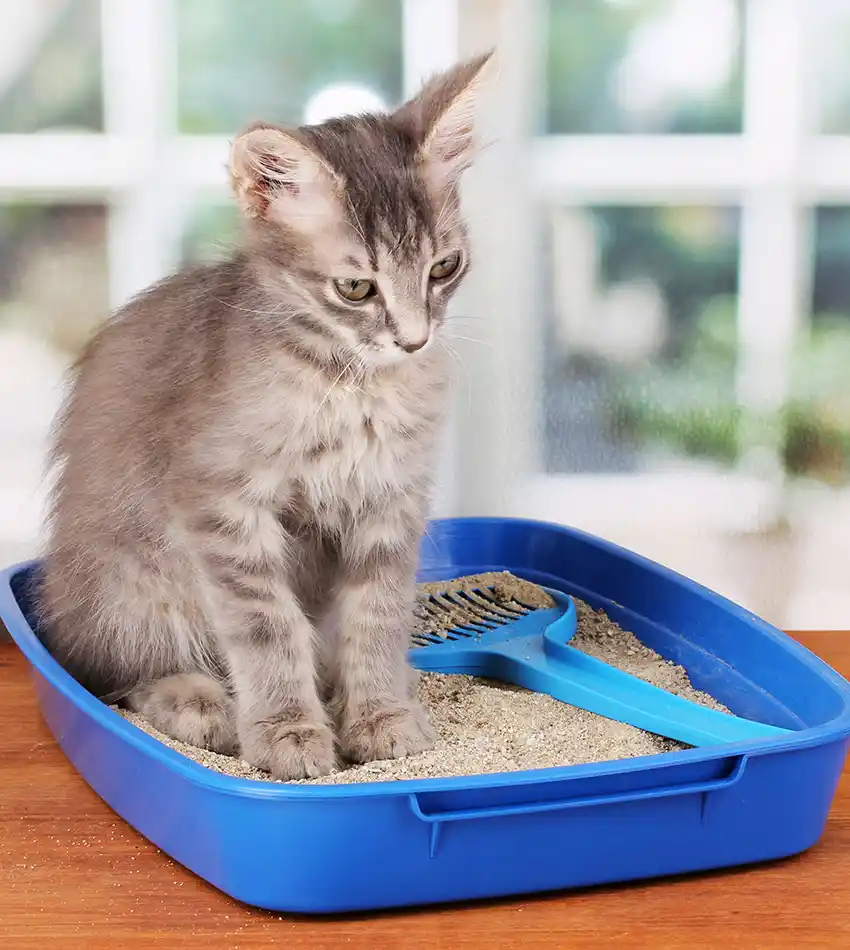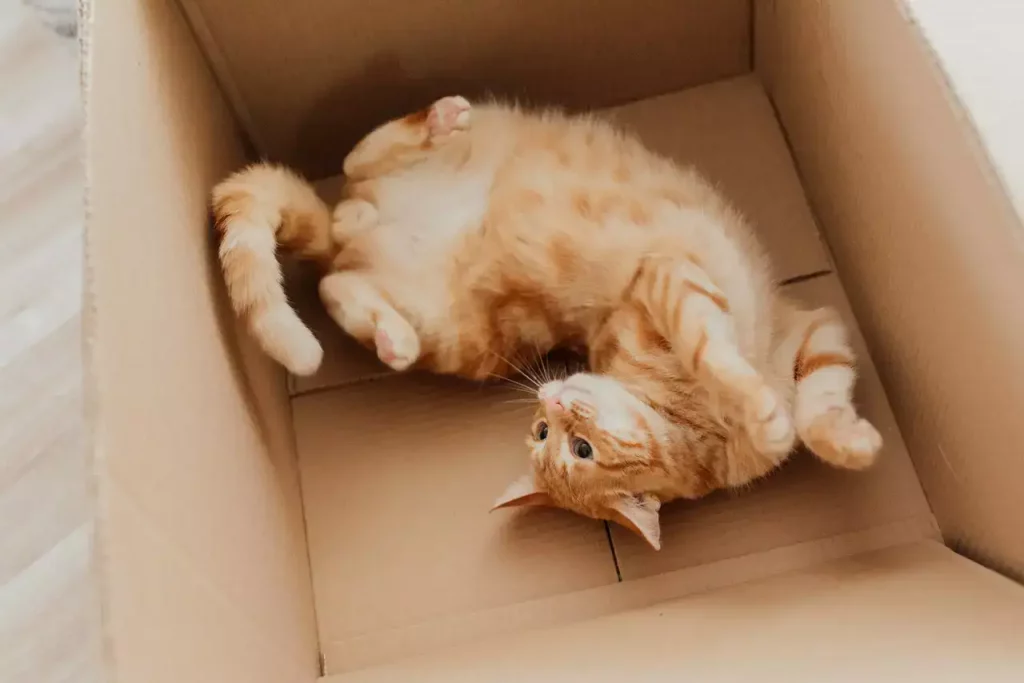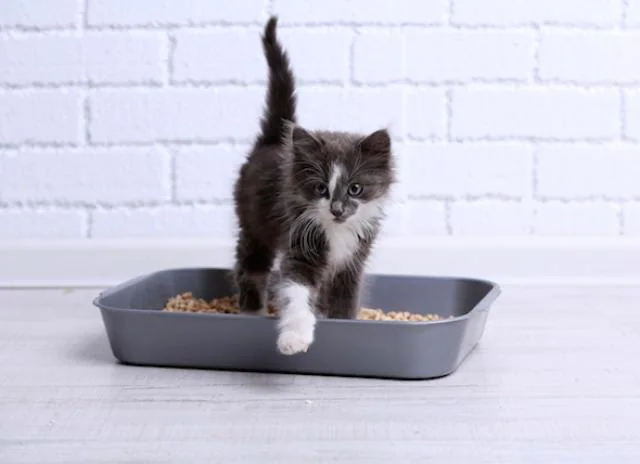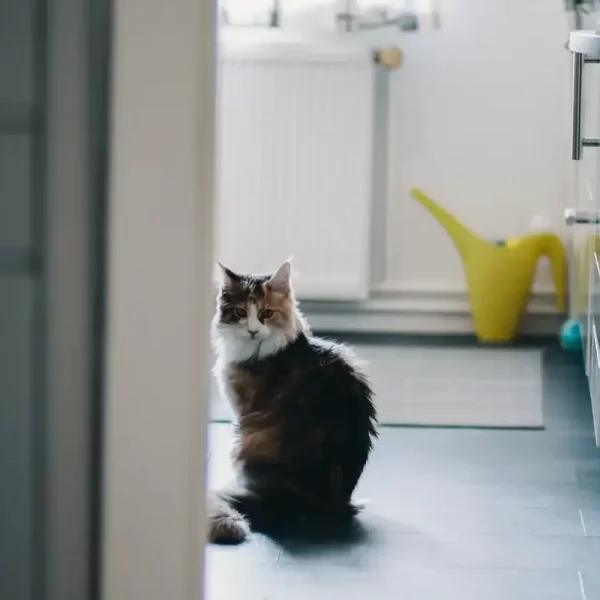Bringing home your kitten for the first time is an exciting experience, but it will come with a lot of challenges… some of which new owners are never truly prepared for!
A huge part of adapting your kitten to domesticated life will be the toilet and potty training. You’ll need to teach them to distinguish when and where is appropriate to go to the bathroom. But be aware that all kittens are different, so it could take more time to housebreak and train than you expect.
You will need lots of patience, positivity and preparation, and there will definitely be bumps along the way. It’s important to not get disheartened at the first hurdle. Just keep persevering with your new friend and soon they’ll be fully toilet trained and one step closer to feeling at home with you.
Quick tip: consider getting a self-cleaning cat litter box if you would like to spend less time on cleaning your cat’s litter.
How to potty train a kitten
As cat owners ourselves, I remember saying to my wife that having a kitten was like having a baby all over again – it really is that challenging, and you need to adopt a strict potty-training routine – here’s how we did it.

What you will need:
You won’t need much in the way of gear if you want to house train a kitten…
- Kitten pads
- Crate
- Plenty of wipes and toilet tissue
1. Build a potty-training routine
When you first start house training your kitten, you should aim to build a routine around their toileting needs.
Luckily, their bladders and bowels are fairly predictable, as they are determined by not only their sleeping pattern, but also what they eat and drink.
- You should always take your kitten out to the toilet first thing as soon as they wake up – and this goes for whenever they wake up from naps too!
- As well as taking them out first thing in the morning, you should also take them out last thing at night or before you are going to leave them alone for an extended period of time: this is to prevent any accidents overnight or whilst you are gone!
- On top of this, you should also aim to take your kitten out to the toilet every thirty minutes to an hour. If they’re new to training, it is best to start off taking them out every half-hour before building up to a whole hour.
We actually started up a diary of what our kitten had eaten and and how often and what times he tended to urinate and defecate. This really helped us to adapt our routine in accordance with our kitten’s habits.
2. Diet control
As mentioned, food and drink are a huge indication as to when you should take your kitten out for potty breaks, with mealtimes integrating into a kitten’s toileting routine alongside the guidelines set out above.
Definitely make sure your cat is eating the best food you can find for her, every day, to avoid causing your cat serious health issues. I personally think of this as my number one priority when taking car of my cat.
Become a Smarter Cat Owner!
Get the free weekly email covering the latest cat news & research.
Bite-sized in just 5 minutes.
All kittens have immature diet systems, which means that each meal tends to stimulate their digestive system faster than it would in adult cats. Generally, kittens need to urinate within fifteen minutes of eating and then do a poop within half an hour of eating.
Handy Hint: Don’t overfeed your kitten as they will eat what you put in front of them. Here’s a guide to their daily feeding schedule.
The nature of a kitten’s digestive system also means that they can handle less food at once, so it is best to give them three smaller meals three times a day rather than two bigger ones twice a day. Once your cat has finished eating, take away the food bowl until the next scheduled mealtime. This will prevent your kitten from overindulging.
You should also ensure that the food you give your kitten is of the higher possible quality – this means avoiding cat food with artificial colours and preservatives and ensuring that real meat is the primary ingredient.
Another thing I’ve found to be quite useful is having the litter your cat uses to be scented.
3. Confinement and consistency
When your kitten is in the early stages of potty training, it is good to confine to a small area such as a room, a crate or via a lead until you are confident that they can roam the house freely without accidents.
Furthermore, consistency goes hand-in-hand with confinement, and it involves introducing your cats to select areas to toilet in so that, over time, they will learn to associate going to the toilet with that area of the house or outside.
A good way to ease your cat into this component of toilet training is via kitten pad training or crate training.
Handy Hint: Never shout or punish a cat for getting it wrong; there are better ways you can discipline a kitten.
4. Kitten pad training
Kitten-pad training is good to introduce the idea of your cat going to the toilet in a select area, but isn’t useful as a long-term solution. You don’t really want your kitten going to the bathroom indoors rather than outdoors.
Essentially, the purpose of the kitten pad is not only to reduce mess, but also to get your kitten used to the idea of doing their business in an approved, select area indoors (an area that is easy to clean up!).

Overtime, your kitten will learn to associate the pad itself with areas where it is okay to toilet, and at this stage it is good to move the mad outside to help them adapt.
Quick tip: consider getting a self-cleaning cat litter box if you would like to spend less time on cleaning your cat’s litter.
5. Crate training
Crates are an effective and approved way of toilet training your kitten at the beginning. It helps to avoid mess, helps you keep a closer eye for signs he needs to go and, most crucially, teaches the kitten to hold it until they are let outside to go toilet.
Make sure the crate is large enough for the kitten to stand, turn around and lie down but not large enough for them to defecate and urinate in – however, do expect some tears and crying (here’s how to stop it).
6. Learn to pick up on the signs
To avoid accidents in the home, it is good to learn to recognize signs that your kitten needs the toilet. Commons signs include:
- Sniffing the floor.
- Circling around the room.
- Looking restless and anxious.
- Going into an area they have previously toileted in.
If your kitten shows any of these signs, take them out to your chosen toileting spot immediately.
However, if accidents do happen, it is best to stay calm and not get angry at your kitten, as this will just make them fearful and cause them stress, which will actually result in more random accidents.
7. Use a phrase they will learn to understand
One of the most important aspects that goes a long with in potty training your kitten to use a phrase they learn to identify with.
With our own kitten, we would say “go pee pee” as soon as we had taken him outdoors or to his kitten pad. By doing so, he would learn to identify the phrase and location with the action.
After using this tactic long enough, whenever you say the magic words of “go pee pee,” your kitten will immediately know what they need to do.
However, if your cat feels shy, you can always experiment with closed-in cat litter boxes, to give your cat more space.
8. Reward the kitten for a good job
When your kitten has finished his pee or poop in the right place, you should give them a reward or positive reinforcement with praise.
By rewarding good behavior you will start a pattern of success which can lead to far faster house breaking and training.
9. Never scold them
Accidents are going to happen a lot, and whilst this can be frustrating, never shout at or scold the kitten.
I remember countless times where I would have just cleaned a pee up from the kitchen floor, only for our kitten to crouch and pee again just seconds later.
Hold your tongue, and don’t react negatively because this can lead to anxiety and fear which will only make them pee or poop more when they aren’t meant to.
When should I start potty training my kitten?
It is generally recommended to start house training your kitten once they are between 12 weeks and 16 weeks old.
This is a good age to start because whilst it means that your kitten is still young enough to learn life-long skills and have their behavior moulded, at this stage your kitten should have enough control over their bladder and bowels to hold it when necessary – making the potty training process easier for them, and cleaner for you!
How long does it take to potty train a kitten?
I won’t sugar coat this at all; it could between 4 and 6 months for your kitten to get fully house trained. There are other factors which come into play though, such as individual temperament and environmental factors.
However, it’s not unheard of for it taking up to a year until a kitten is properly potty trained.
For example, you bring your kitten home once it’s over twelve weeks old, it might be the case that it hasn’t been housetrained by their previous owners, and certain behaviours they’ve picked up need to be unlearned.
Be prepared for accidents, but above all, have some wipes and tissue paper on hand all the time as you will get through a lot of this stuff!
Conclusion
Now you know how we advise you housebreak a kitten, I would love to know how you got on. Get in touch via social media and leave a comment.
Similarly, if you have better ideas on how to potty train a kitten, please share those in the community too.
The bottom line is this; do not underestimate to the work that goes into taking care of a new kitten. They’ll need to learn everything – from where to eat, going for walks and how to interact with people – by scratch, so you need to be prepared to put the work in so as to ensure that this incredibly formative period in your kitten’s life is successful.
Toilet training your kitten might feel a bit difficult at times, but with the right attitude, attentiveness and patience, they will learn this life-long skill.
However, if you have any concerns about their ability to toilet train, always contact a vet or a professional trainer. As unlikely as this is, there are some kittens who will need expert help.



Leave a Comment